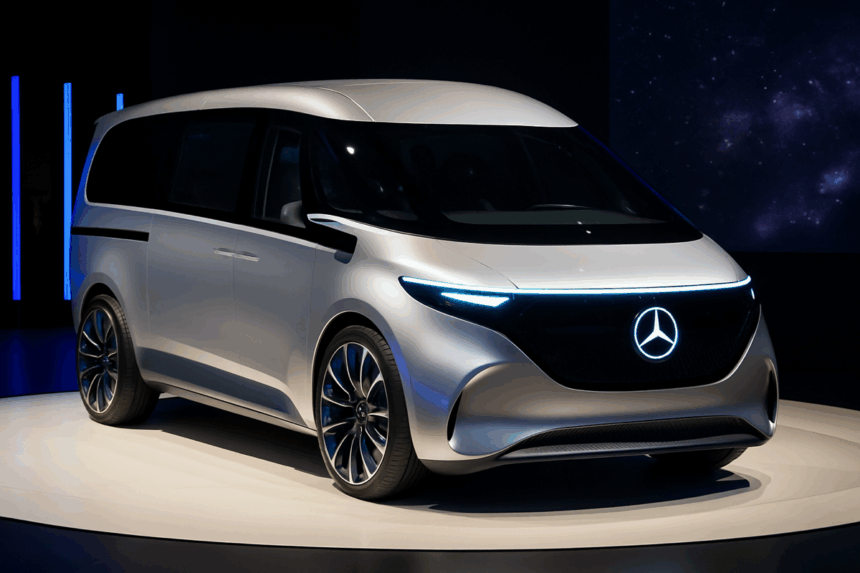Mercedes-Benz has revealed its Vision V Concept, a luxury all-electric van that blends futuristic styling, advanced technology, and a dash of sci-fi flair. Set to debut at Monterey Car Week, the vehicle’s design raises the question: Is it an advancement for electric mobility, or a glamorous side project better suited to niche markets?
What’s Happening & Why This Matters
A Concept in the Spotlight
The Vision V Concept arrives during a summer when wildfires and smoky skies in California underscore the urgency for cleaner mobility solutions. Mercedes staged the preview on a smoky Los Angeles helipad overlooking Dodger Stadium, showcasing a van that’s as much an art piece as it is a transportation concept.
Its sleek, sweeping lines redefine what a utility van can look like. Over 800 tiny light louvres span the grille, headlights, and taillights, while a subtle spoiler and chrome diffuser add sportiness. Despite the dramatic styling, Mercedes says the production model will closely mirror this concept’s proportions, with only minor adjustments — mainly an increase in height by a few inches.
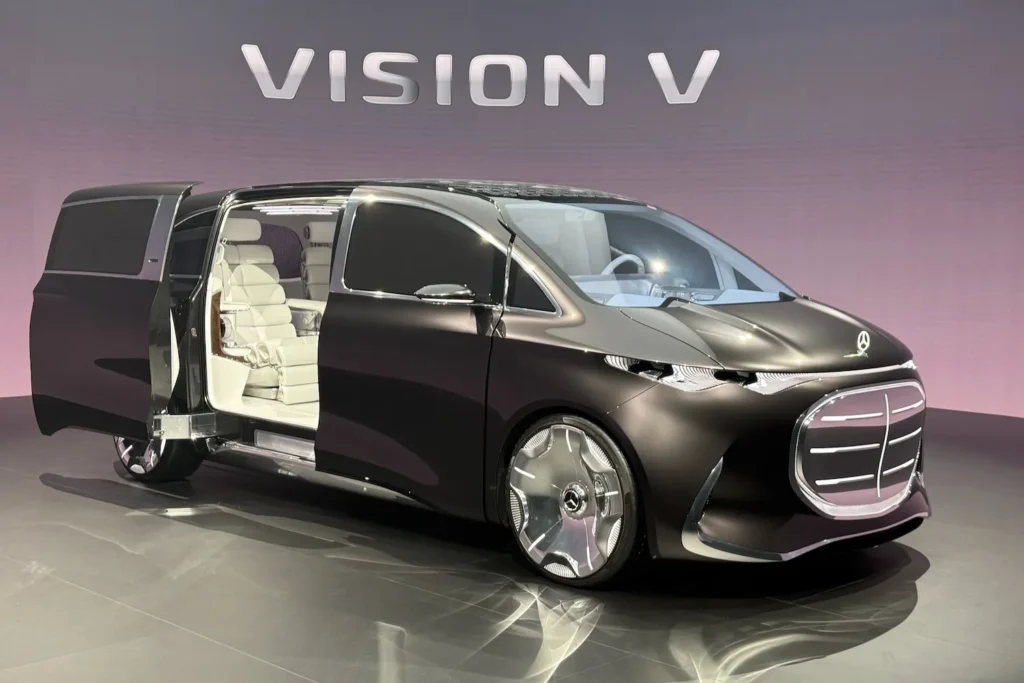
Power, Range, and Handling
Mercedes confirmed front-wheel drive and 4Matic (all-wheel drive) versions, targeting around 300 miles (483 km) of range. While battery capacity remains undisclosed, the brand emphasized rear-wheel steering to give the van car-like agility. This focus on handling is rare in the utility segment, hinting at a push toward driver enjoyment alongside practicality.
An Interior Built for the Jet Set
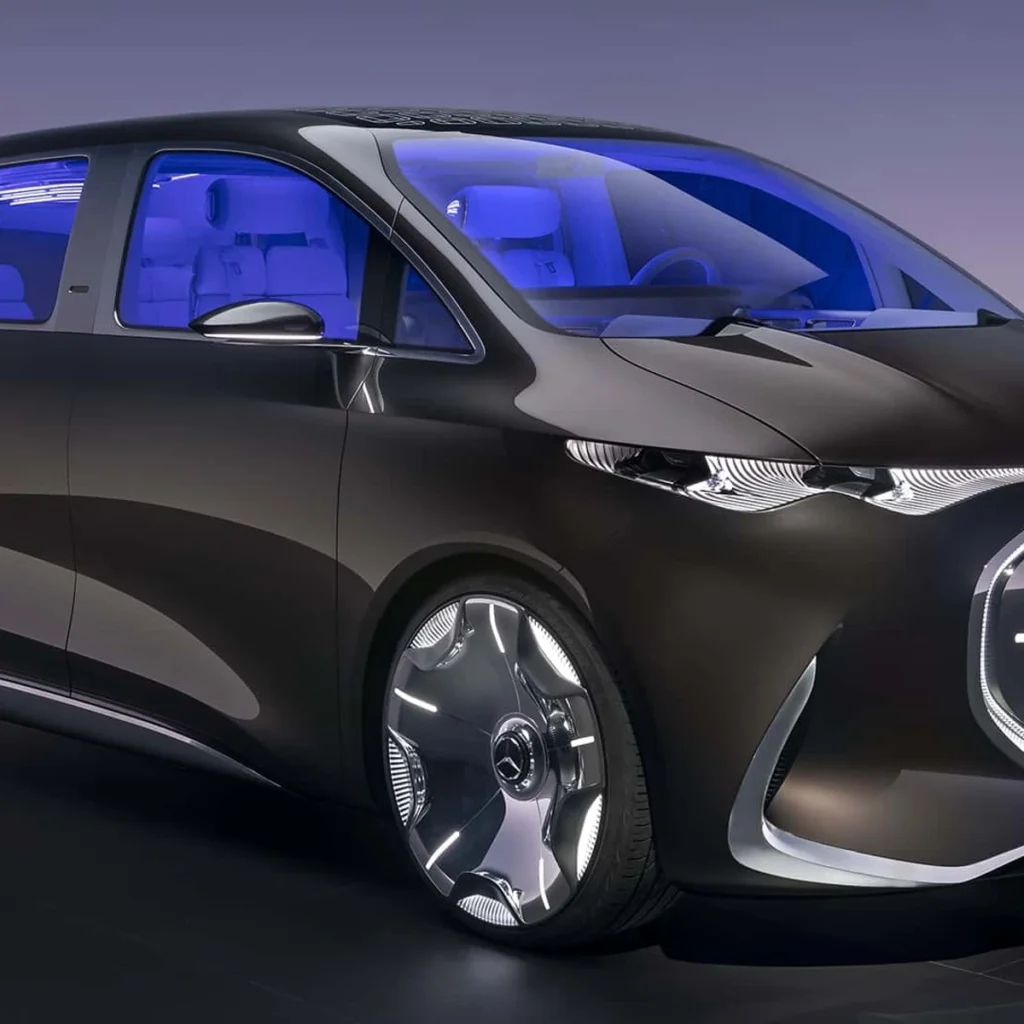
Inside, the Vision V transforms into a rolling lounge. The front seats feature three large “Superscreen” displays, but the rear steals the show. A 65-inch roll-up screen supports movies, gaming, work calls, and even karaoke. A 42-speaker Dolby Atmos sound system, ambient lighting, and reclining “zero-gravity” seating create an immersive experience.
Solar panels on the roof — 168 IBC cells — can add up to 3.44 kWh per sunny day, equating to about 13 miles (21 km) of range. While modest, this can help power climate control or onboard entertainment during stops.
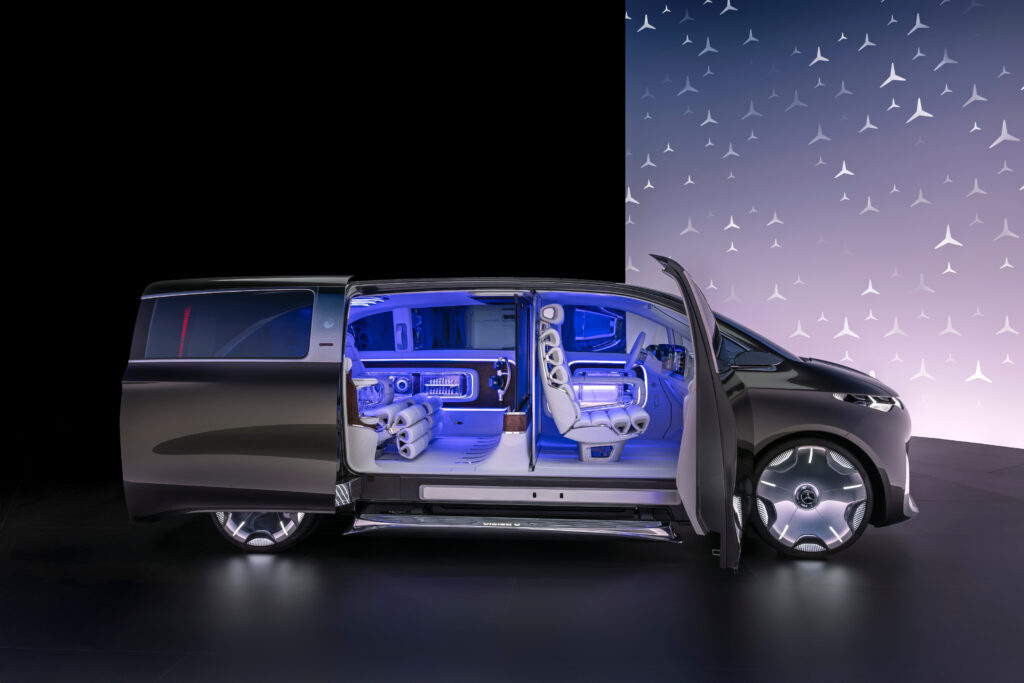
From Concept to Production
When production begins, the model will ditch the “EQ” badge in favor of VAN.EA architecture naming, with variants dubbed VLE (luxury electric) and VLS (super-luxury). The vans will use an 800V system and NACS charging port for faster U.S. charging.
Some concept features—like oversized 24-inch chrome wheels and art deco ceiling lighting — will be toned down for durability and aerodynamics. But Mercedes insists that the overall design language will remain intact.
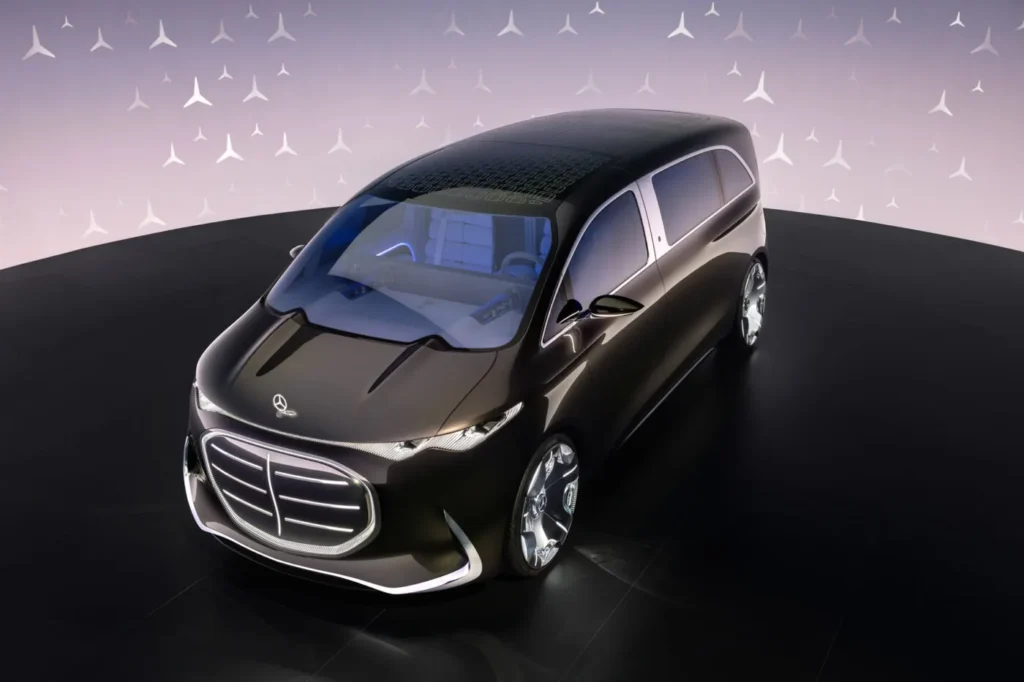
The Bigger Picture
The Vision V sparks debate about where such a high-end van fits. In Asia, super-luxury people movers are status symbols, while in Europe, upscale airport transfers are common. In the U.S., however, minivans have faded from fashion, and EV adoption has slowed. Still, commercial fleets and airport services could view the Vision V as a prestige upgrade with eco-friendly credentials.
As one Mercedes rep suggested at the preview, “Fleet managers often see the EV-to-ICE equation more rationally than private buyers. That’s where the Vision V could shine.”
TF Summary: What’s Next
The Mercedes-Benz Vision V Concept blends luxury, technology, and electric efficiency in a package that’s more spaceship than work van. While it’s unlikely to convert minivan skeptics in the U.S., it could thrive in fleet and VIP transport roles in markets that embrace luxury vans.
The real question is whether Mercedes will use this halo model to drive EV adoption in its commercial lineup — or keep it as a niche statement piece. If it delivers on range, comfort, and charging speed, the Vision V crests the top end of electric transport.
— Text-to-Speech (TTS) provided by gspeech


